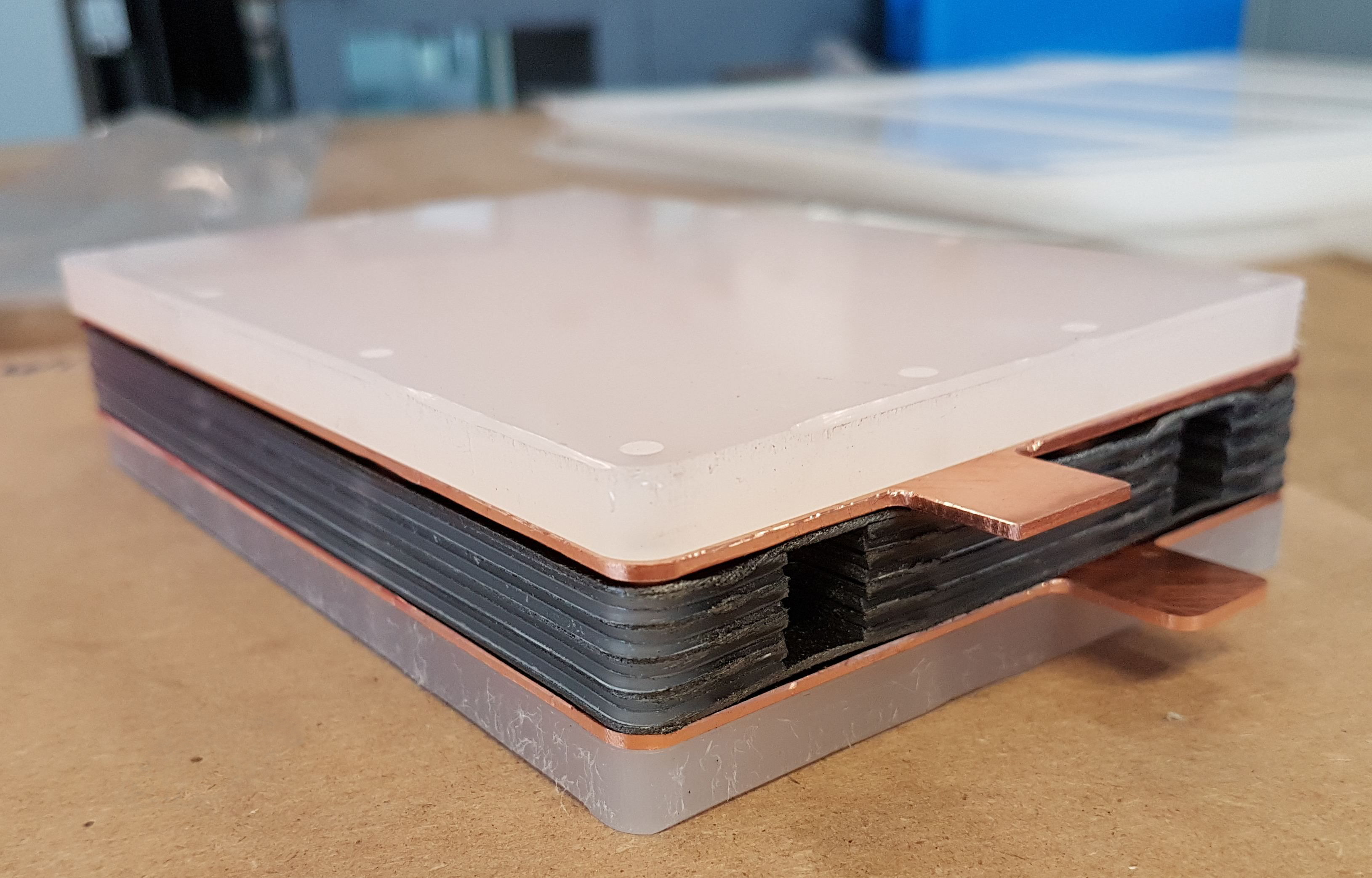Affordable and clean energy
Good health and well-being
Decent work and economic growth
Partnerships for the goals
Coordinator: Fraunhofer-Institut für Umwelt-, Sicherheits- und Energietechnik
Contact Person: Dr.-Ing. Anna Grevé
Address: Osterfelder Straße 3, 46047 Oberhausen
Phone: +49 208 8598-1271
Email: anna.greve(at)umsicht.fraunhofer.de
Project partner:
- Volterion GmbH, Dortmund
BiNiFe - Development of a Low-Cost Bipolar Ni-Fe Battery for Energy Storage
In Germany and South Africa, the closure of coal-fired power plants and the increased use of volatile renewable energies are increasing the demand for stationary energy storage systems. These are necessary to cover demand peaks when using electrical energy. The German-South African project BiNiFe is developing and testing a rugged and cost-effective battery for use in South Africa. Among other things, this should make a contribution to more environmentally friendly operation of the many local mobile towers that are as yet often operated with diesel generators.
Battery storage as a replacement for diesel generators
The increasing use of renewable energies requires innovative solutions for efficient and cost-effective stationary energy storage in many places in order to ensure the stability of the power grid. This is especially true for South Africa, where electricity demand is high in the early morning and early evening, when renewable electricity generation is minimal. The need for energy storage in South Africa is also enhanced by a high number of mobile towers which are currently not connected to the power grid, and are therefore usually supplied by expensive and polluting diesel generators. The use of diesel generators in off-grid hybrid energy systems for power generation is widespread in many African countries due to weak power grids. These are often used in remote locations where there is insufficient or no connection to the power grid. NiFe batteries, on the other hand, offer a local, emission-free and very safe alternative for energy supply.
Electrochemical battery cells offer a high degree of flexibility for the design of energy storage systems. For such a large amount of battery storage, the materials and manufacturing processes used should be as inexpensive as possible. Maximum lifetime and high reliability are equally important features, while the size of the battery is of less importance. Electrochemical battery technologies with aqueous electrolytes are therefore particularly suitable for these economic, safety and environmental reasons. Lead-acid batteries are currently dominating the battery market. They are a mature technology, but their use on a large scale is limited by low depth of discharge, relatively short life, and lack of temperature stability. Other technologies are unsuitable for large-scale energy storage due to relatively high costs and safety concerns. The BiNiFe project is therefore relying on the well-known, inexpensive and environmentally friendly technology of nickel-iron (NiFe) batteries to provide suitable stationary electricity storage. This is characterised by extreme longevity, high safety as there is no potential for spontaneous combustion, and largely uncritical chemicals. The aim of the project is to develop, build and test a prototype of the bipolar nickel-iron battery with significantly improved performance and service life and in line with the requirements of the South African market.

The innovation process
The BiNiFe project is pursing an innovative combination of battery materials and design optimisation as well as the application of new mass production techniques. By using corrosion-free conductive polymer film (bipolar plate), it is possible to save over 80% of conventional battery materials such as insulating material and cables. In the project, in cooperation with the University of the Western Cape and Volterion GmbH technology partners, the development and optimisation of the individual component and the production of individual battery cells will be addressed, and this knowledge will be used to make a prototype. The 5 kW and 5 kWh prototype in the bipolar design will be fully welded and examined. Successful development of the bipolar battery demonstrator should create the foundation for a new generation of powerful and cost-effective storage batteries.
From international cooperation to the international market
The South African Department of Energy is also calling for the use of storage technologies for future solar and wind energy projects. This regulation is providing favourable conditions for the application of the new bipolar NiFe battery technology. This market is estimated at 2.5 billion dollars for Africa. After successful development, the project partners aim to implement the new bipolar NiFe battery technology in order to serve these target markets. For this purpose, a corresponding commercialisation strategy is to be developed together with the partners Connect'd Energy and Volterion GmbH. Eskom will include the customer perspective both in the development phase and implementation of the technology, and establish the necessary connections with the relevant authorities to penetrate the target markets.

With the use of this innovative and sustainable battery technology, the energy supply can be made economic, safe and environmentally friendly, especially in remote regions. The very significant market for this technology will also have relevant employment effects in the local area.
